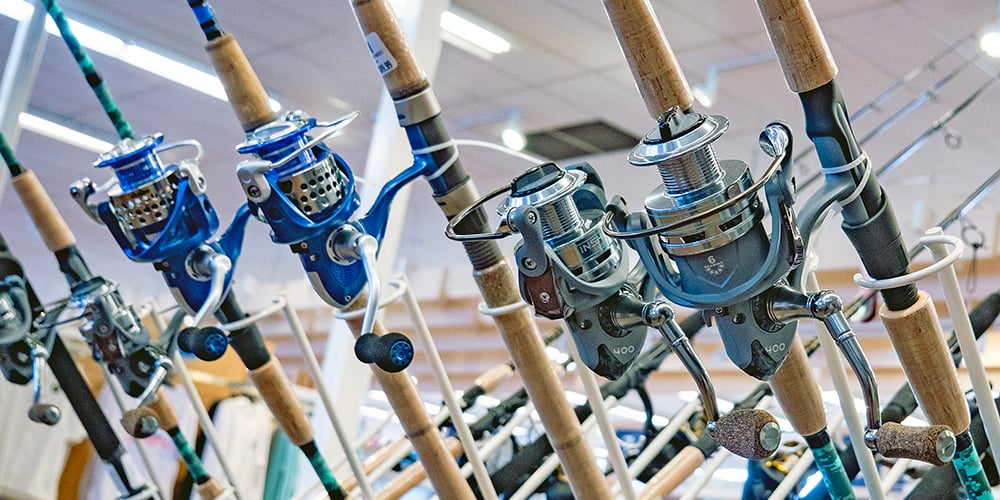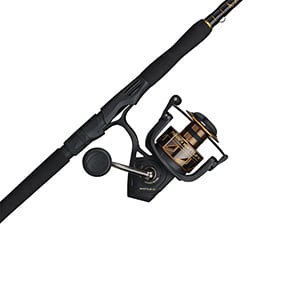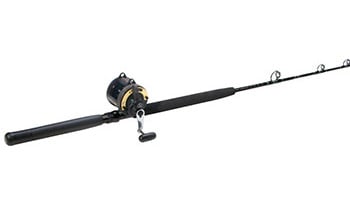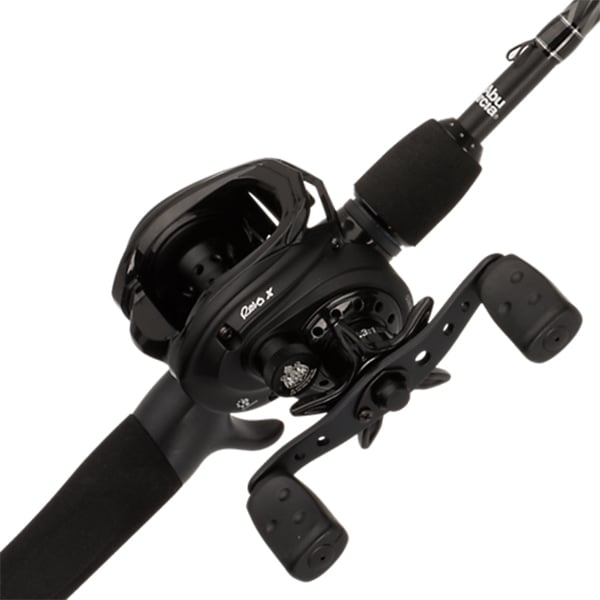
What Rod and Reel Combos Are

Heavy spinning combos such as Penn's Battle III combo, feature sealed stainless steel ball bearings for saltwater use.
A combo is a matched rod and a reel set, configured for a specific type of fishing. A wide selection is available, ranging from really basic up to top quality packages with excellent reels by Penn, Shimano and others.
Combos are ready to use, "out of the box". All you have to do is wind line onto the spool and add the terminal tackle of your choice. Some combos even come with line pre-wound. In general, combos are attractively priced, which makes them appealing for budget and value-conscious customers. A combo has a matched rod and reel, so you don't have to worry about the action of the rod (and whether it has the right flexibility) or the gear ratio of the reel (and whether it has enough mechanical advantage). A fishing tackle expert has done this work for you, so you don't have to.
Many anglers who buy combos want to enjoy recreational fishing and need a relatively simple, effective and inexpensive rig. Novices or value-conscious anglers who don't want to customize tackle are prime candidates for combos, as are parents who want something functional and cheap for their kids to learn on. However, combos also can be sophisticated fishing gear, with good components, specifically designed for a variety of fishing techniques.
Choosing a Rod and Reel Combo

Shimano's Triton Lever Drag (TLD) reel is matched with a 6' Star stand-up rod for a lightweight and reliable conventional combo.
What type of fishing will you do?
- Bait casting is the art of casting an artificial lure with a revolving-spool reel. Practiced in both salt and fresh water, it's called bait casting because when the technique was developed a century ago, it was used strictly for casting live minnows as bait.
- Trolling is a technique in which a line with live or artificial bait is trailed behind a moving boat at any depth and at varying speeds, depending on what species is being fished.
- Drift fishing is like trolling, except that the boat drifts quietly with the current or wind, instead of powering in a specific direction.
- Chumming involves scattering ground-up fish-usually oily, always smelly-into the water as bait to attract hungry fish that in turn attract bigger hungry fish.
- Surf fishing is saltwater baitcasting done from the edge of the shore, a jetty, or a small boat, in which the angler plays the hooked fish through the surf.
- Fly-fishing is the art of casting an artificial fly either as sport (fly-fishing) or as competition (tournament casting). It differs from all other types of casting in that the weight of the line is propelled through the air rather than the weight of the lure. Fly-fishing equipment is highly specialized, with its slender fly rods, fragile line and extremely lightweight flies (artificial lures). Once an exclusively freshwater sport, fly-fishing is rapidly gaining popularity as a saltwater fishing technique.

Baitcasting combos are offered for fresh- and saltwater applications. Pictured is Abu Garcia's 7' Revo X Low Profile baitcasting combo.
Where will you fish?
Freshwater-in lakes and rivers, or saltwater-in the ocean, either along the coastline, deep sea, or inshore and in tributaries. Rods and reels used for freshwater fishing do not need the extensive protection against aggressive corrosion brought about by exposure to seawater. Heavy-duty saltwater reels are pricier because they feature corrosion-resistant materials such as anodized aluminum, shielded stainless steel or bronze bearings and forged aluminum spools.
What kind of reel do you want?
- Conventional reels are used for bait casting, trolling or bluewater fishing. Typical line weights range from 10lb. for bait casting all the way to 130lb. for big ocean species.
- Spinning reels are used for many different fishing styles and for lighter lures. Line weights used on spinning reels vary from as little as 4lbs to approx. 25-30lbs. Spinning reels can be designated for ranges, e.g., 2 to 8lb., 8 to 15lb., and 15 to 30lb. test.
Conclusion
Fishing is one of the most popular outdoor activities, but not everyone who puts their hook in the water is an expert. Face it, the terminology can be just a bit of a challenge for the novice, and if you talk to three of your fishing friends, you may get three different answers about what kind of rod and reel to purchase. That's why buying a rod and reel combo can be a definite shortcut. For a moderate cost, you can get proven components, middle-of-the-range length, action and line class, and you can get out on the water and start catching fish.